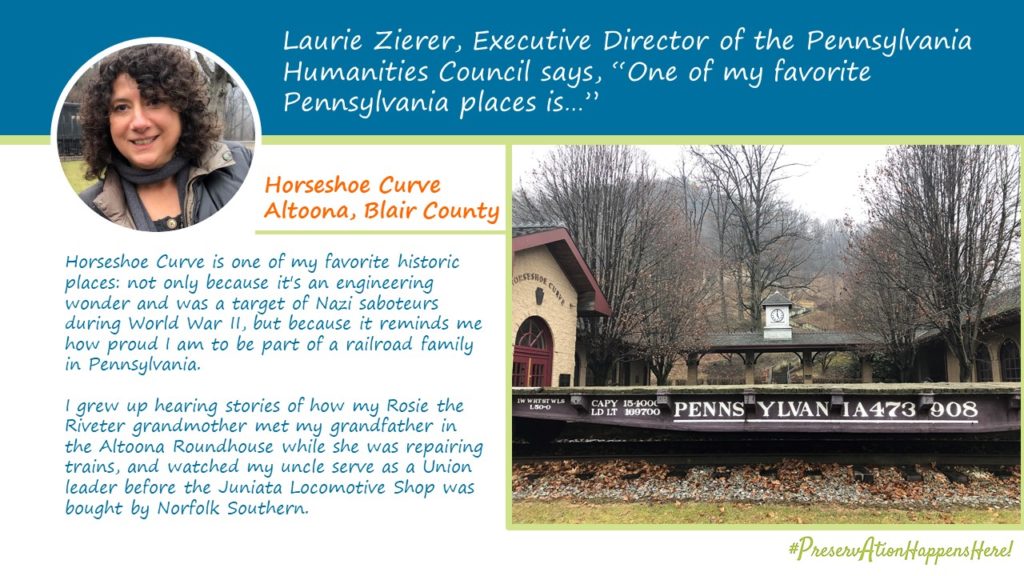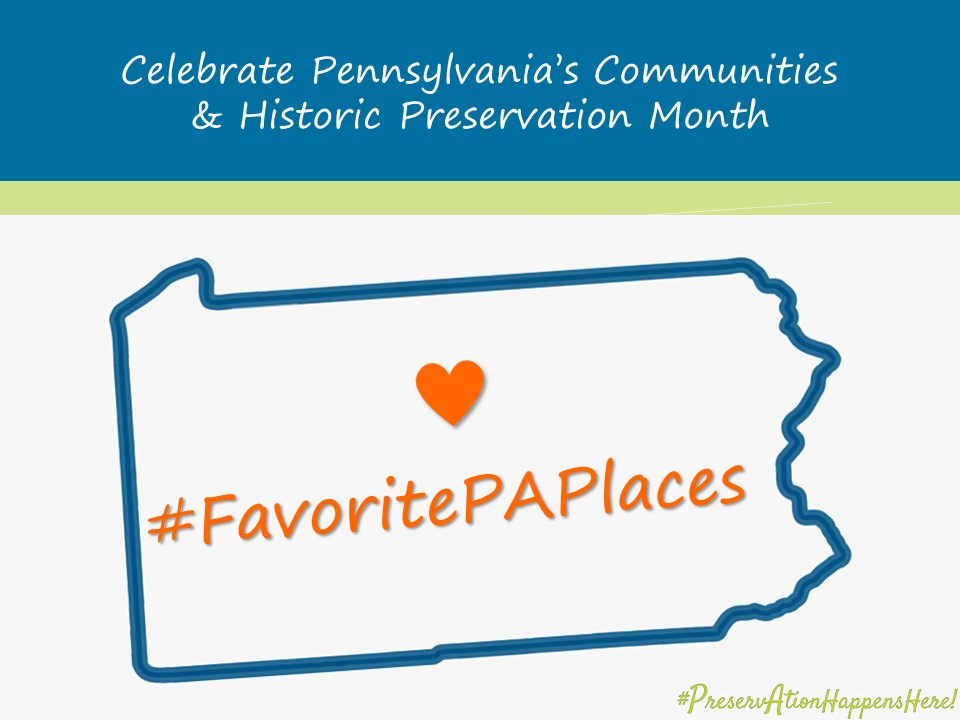Pennsylvania’s communities are filled with special and meaningful historic places and spaces that add value to our lives and offer comfort and stability during these challenging times. Now more than ever, it is important to stay connected to our communities.
Today’s Spotlight: Laurie Zierer
The next entry in PA SHPO’s #FavoritePAPlaces campaign is Laurie Zierer, Executive Director of the Pennsylvania Humanities Council, talking about why Horseshoe Curve near Altoona, Blair County is one of her favorite Pennsylvania places.

Horseshoe Curve
Completed in 1854 for the Pennsylvania Railroad, Pennsylvania’s Horseshoe Curve (Key #001300) is a three-track rail line and an engineering marvel that is listed in the National Register of Historic Places, designated a National Historic Landmark, and a National Historic Civil Engineering Landmark.
The Curve solved a significant challenge for the Railroad – easily and (somewhat) quickly crossing the Allegheny Ridge. Before J. Edgar Thompson designed the curve and 450+ workers built it, anyone travelling east to west to Pittsburgh and beyond could only use the 1834 Allegheny Portage Railroad (a series of inclined planes and canals) to get across the mountain range.
Before the railroad era, it took about 20 days to get from Philadelphia to Pittsburgh. The railroad, with the advantage of Horseshoe Curve, could make the same trip in approximately 15 hours. Today, of course, we can use the Pennsylvania Turnpike to get between the commonwealth’s two largest cities in about 5 hours.
Horseshoe Curve was almost immediate a popular tourist spot and an observation park was built along the tracks in the 1870s. The curve is such a critical part of Pennsylvania’s transportation infrastructure that the Nazi’s included it as one of a dozen critical targets in the U.S. to destroy during World War II.
Horseshoe Curve is still part of an operating rail line, the Norfolk Southern Railway’s Pittsburgh Line. The Railroaders Memorial Museum now provides access to the curve for visitors to learn more about the history of railroading and railroaders in this area of Pennsylvania.
Share your #FavoritePAPlace
What older and historic places in your community are you looking forward to connecting with again? Share your answer with us in the comments or email us at mail@pahistoricpreservation.com.
Use the hashtags #FavoritePAPlace and/or #PreservationHappensHere and your entry just might be featured, too!

Leave a Reply